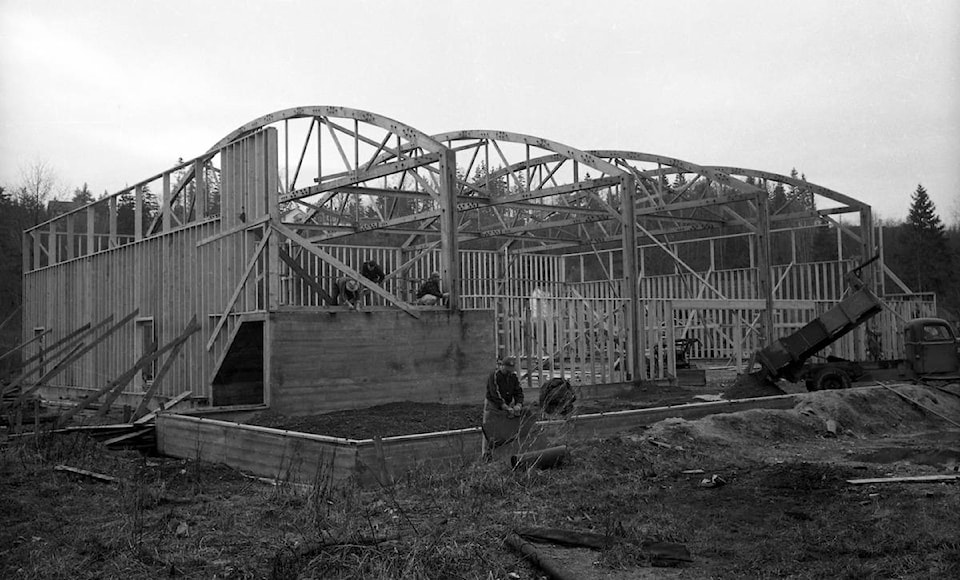By Beth Boyce,
Museum at Campbell River
When events overtake our daily lives, and situations beyond our control impact even the smallest of decisions we make, like whether to hug a friend, it can feel overwhelming.
In moments like this, I take some small comfort from learning about past events that disrupted people’s lives, to discover how they coped, and how they managed to push through. Working at the museum, I have access to many stories from which to draw inspiration.
One such event took place on Dec. 31, 1949 when an unusually large dump of snow landed in Campbell River. More than two feet of wet snow blanketed the town, bringing life to a standstill. We have many photographs of this in the archives, as the scene was quite picturesque. The weight of the snow was so great, however, that there was more than one structure in the community which could not bear the brunt and completely collapsed as a result. The two greatest losses were the Campbellton Community Hall and the recently completed Scouts Hall. At that time, the Campbellton Community Hall was the only community centre in the area, playing host to every kind of event, from dancing lessons, to film screenings to boxing matches. In fact, a New Year’s Dance was scheduled for that evening, and it was very lucky that no one was present when the roof caved in.
The local newspaper reported at the time that, “The loss of the hall is a great blow to residents of the district as it was the only hall in the immediate vicinity large enough to accommodate large size gatherings…Approximately 45 by 80 feet in size, the Community Hall was built about 1923 by volunteer labour.” And went on to state, “The loss of Campbellton Community Hall forcefully brings to the attention of the residents the crying need for an entertainment centre in this community. More than ever before, we should do everything in our power to support the Campbell River Memorial Hall project. Could we not take a lesson from these people who over 27 years ago realized their need of a community centre and did something about it?”
At the time, Campbell River was a small community but a small population didn’t stop the village from rallying to build a new Community Hall. The task was taken on by the Kinsman Club, which oversaw fundraising efforts and planning. A newer, much larger hall, was constructed entirely by volunteer labour, donated materials, and funded through community fundraising drives. Even the parcel of land was donated by the local branch of the Legion. It took several years before the building was complete. However, as soon as the exterior walls and roof were raised in 1954, the Hall started hosting events. Its construction wasn’t fully finished until 1958, when it was aided by a strike at the Elk Falls Mill.
Ken Bennet, who helped to build the Hall, spoke with the Mirror about its construction in February, 2000.
“Bennet guesses the building might never have been finished, if it weren’t for the pulp mill strike of 1958. That event left hundreds of workers idle, including carpenters, electricians, plumbers and pipefitters – all the trades needed to finish the work…It was a matter of phoning them up, and it was hard to say no when everyone knew the workers weren’t doing anything else.”
Even a small community can achieve great things when people are working together. The building and its management were handed over to the City of Campbell River in 1964 for the sum of $1. It was not replaced until 2000, and the Community Centre that now stands in its location today was officially opened in 2001.
Necessity is the mother of invention, as they say. Having to close the museum (incidentally, another building constructed entirely through community fundraising efforts, and then sold to the city for the sum of $1) to the public over the last few months has forced us to become creative, and find new ways of sharing our collections and stories with the community. You can now find so much more information and local history stories on our website, our social media, and on our YouTube channel.
We are now able to invite you back into the building to visit our exhibits and archives; however, our programs will have to remain online for the foreseeable future, so be sure to check in to see what is happening.
